It’s arguably one of the most famous Renaissance sculptures ever created, and in this post, you’ll discover the ultimate list of facts about the Statue of David.
Related: Here are multiple more of the artist’s works.
1. Who created the statue of David?
The statue was created by one of the most talented artists to ever walk the earth, Italian polymath Michelangelo Buonarroti (1475 – 1564).
He was a talented sculptor, painter, architect, and poet of the High Renaissance, and his talent was only rivaled by some of his colleagues who lived in the same period, Leonardo da Vinci and in some ways, Raphael.
Michelangelo was mostly known as a sculptor, a form of art that made him famous, starting with the “Pietà,” and which he practiced until he died (literally). He was, however, also a prolific painter, most famously known for his work ‘The Creation of Adam” on the ceiling of the Sistine Chapel and The Last Judgement on this chapel’s wall.
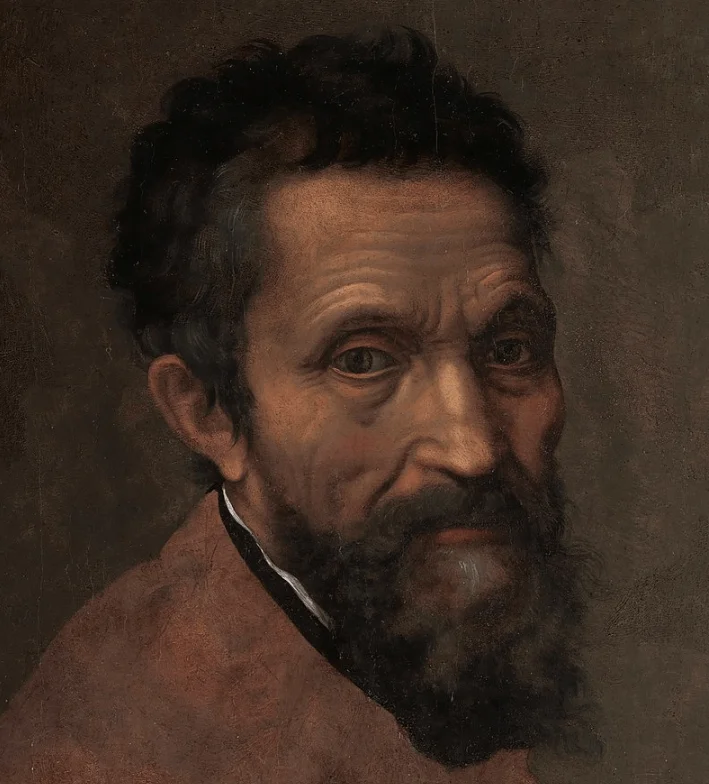
2. When was the statue of David created?
The statue was created in a period referred to as the “High Renaissance,” between 1501 and 1504.
This period is considered to be the transition period of the Middle Ages into modern times, and Florence, the location where David was created, was its epicenter.
3. It’s much bigger than you think
If you see a picture of this statue, it’s hard to imagine that it’s huge. It doesn’t represent the size of a man in real life at all.
It stands 17 feet / 517 centimeters tall, which is about 3 times the size of the average man.
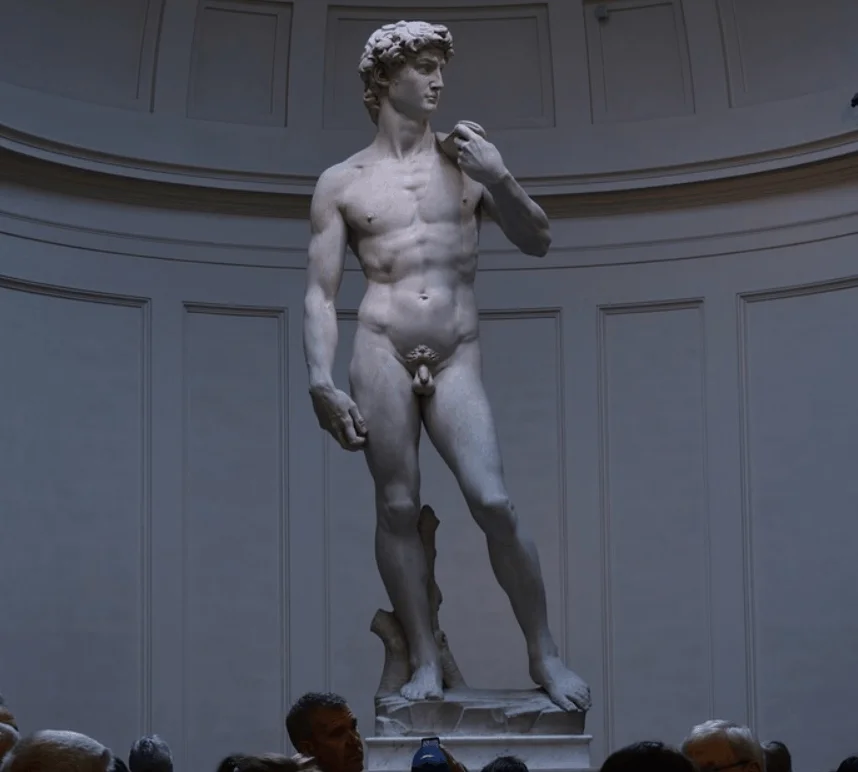
4. It was supposed to be part of a series of statues

The statue was commissioned nearly a century before David was completed. The “Arte della Lana,” the wool guild, one of the “greater trades” of Florence during its Golden Age, had the idea of placing twelve large Old Testament statues in the buttresses of the Florence Cathedral.
The first statue, a figure of Joshua, was completed in 1410 by famous Italian sculptor Donatello. The second one, a figure of Hercules, was completed over 5 decades later in 1463 by Florentine sculptor Agostino di Duccio.
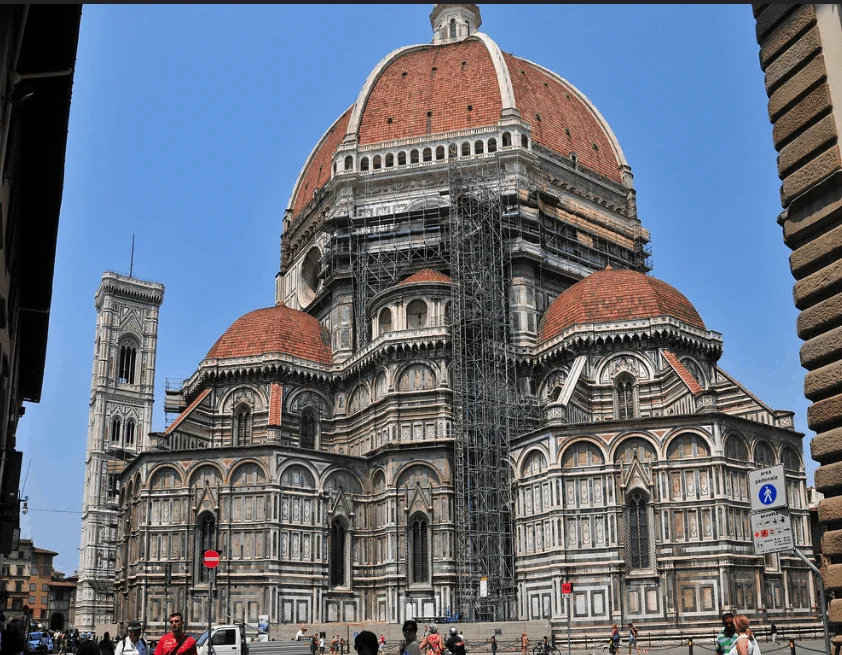
5. The earlier statues were made of terracotta
David was created out of marble, but both the statues of Joshua and Hercules were made out of terracotta a clay-based ceramic, and the same earthenware used to create the hundreds of Chinese Warriors of the Terracotta Army.

6. David was created out of a single block of marble
After the creation of the second statue, that of Hercules which was completed in the year 1463, the commissioners were eager to continue the work.
Therefore, a solid block of marble was brought to Florence from a quarry in Carrara, a city in the Tuscany region of Italy, in the year 1464.
Discoveries made in 2005 have identified that the exact origin of the marble was the Fantiscritti quarry in Miseglia, one of the 3 main valleys in Carrara.
Unfortunately, this also revealed that the marble is of inferior quality as it has a lot of microscopic holes in it.

7. Two other sculptors worked on the statue before
One of the most interesting facts about the Statue of David is that the original sculptor started chipping say at the block of marble 11 years before Michelangelo was even born.
The first sculptor to work on the massive block was a man named “Agostino,” who managed to create the shape of the legs, arms, and torso of David. He also managed to create the hole between the statue’s legs, 40 years before the statue would be completed.
Why he stopped in the year 1466 is unknown, but it wasn’t until 11 years later that another sculptor by the name of Antonio Rossellino took over, only to be acquitted shortly after he started.

8. The block of marble was neglected for multiple decades
The block of marble must have looked pretty bad the moment it was left unattended in the workshop of the Cathedral of Florence. Nobody seemed to be able to turn it into the masterpiece it would eventually become.
It was left to the elements for a total of 26 years and was only mentioned once during this period during an inventory of the cathedral workshop.
It wasn’t flattering at all:
A certain figure of marble called David, badly blocked out and supine.
Description of David in the year 1500.
9. A young sculptor was finally commissioned
Michelangelo already built his reputation when he created the Pietà, now located in St. Peter’s Basilica in Vatican City, between 1498 and 1499.
He was only 24 when he got the commission for the Pietà and only 26 when he started the work on David. Many other sculptors were considered, including his main rival Leonardo da Vinci, but the young Michelangelo managed to scoop up this project.
He got the commission on 16 August 1501.
10. How much does the statue weigh?
When the Operai finally decided to invite Michelangelo, they referred to the block as “The Giant that was raised on its feet“
This massive block of marble, which was rough and unfinished, weighed well over 12,000 lbs / 6,000 kilos.
11. Deciding the perfect location for David wasn’t easy
On September 13, 1501, Michelangelo started chipping away at the large block of marble. This was less than a month after he received the commission.
He worked on it for well over 2 years and it was nearing completion in January 1504. It was then that the decision to put it on top of the Florence Cathedral was dropped. After all, lifting a huge block of marble that high was simply impossible at the time.
The most prominent artists of the time, including Leonardo da Vinci and Sandro Botticelli, formed a committee of 30 people to decide where to put the masterpiece.
It was eventually decided to place it just next to the “Palazzo della Signoria,” the city hall of Florence. This building is now known as the “Palazzo Vecchio,” which translates to “Old Palace.”
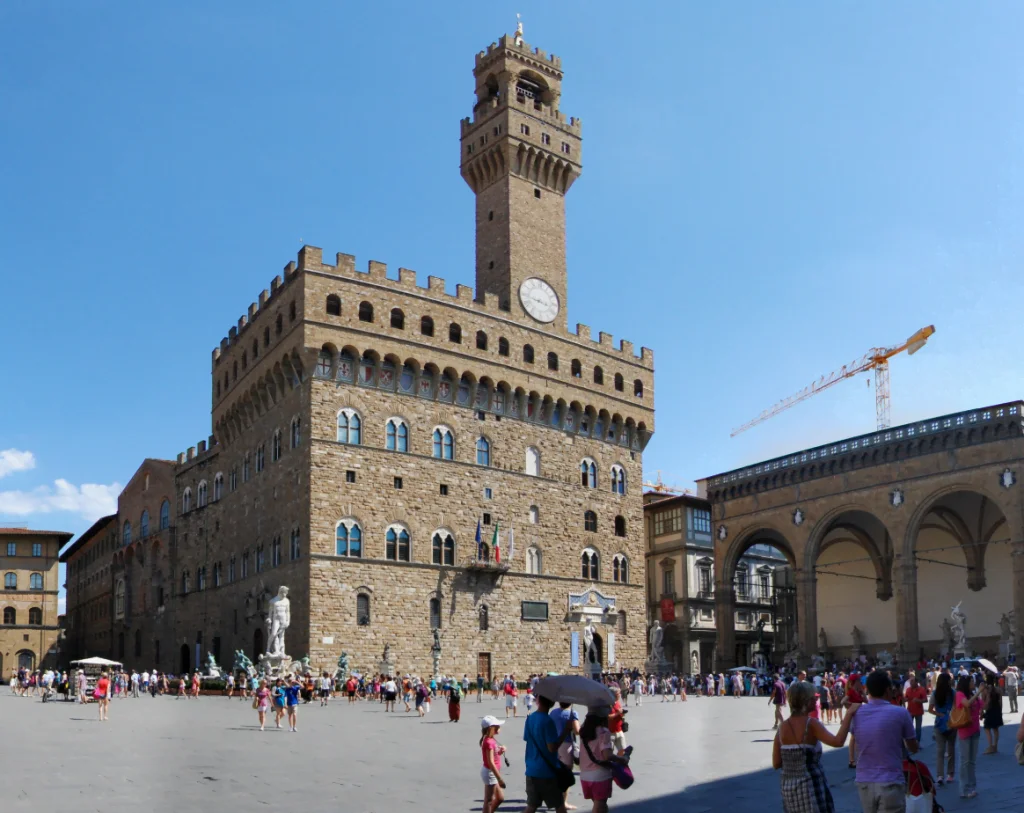
12. It replaced another Renaissance statue
Botticelli was in the camp that preferred to see the statue of David located in the surroundings of the Florence Cathedral. After all, this was the idea when the statue was commissioned in the first place.
This didn’t happen though because da Vinci and multiple other people argued that the statue wasn’t able to face the weather conditions due to its inferior marble, so it needed to be put underneath a roof.
For this to happen, another sculpture named “Judith and Holofernes,” created between 1457 and 1464 by Donatello was replaced to make way for David.
This statue can now be found inside the Palazzo Vecchio in the “Hall of Lilies” (Sala dei Gigli), and a copy of this work is in front of it.
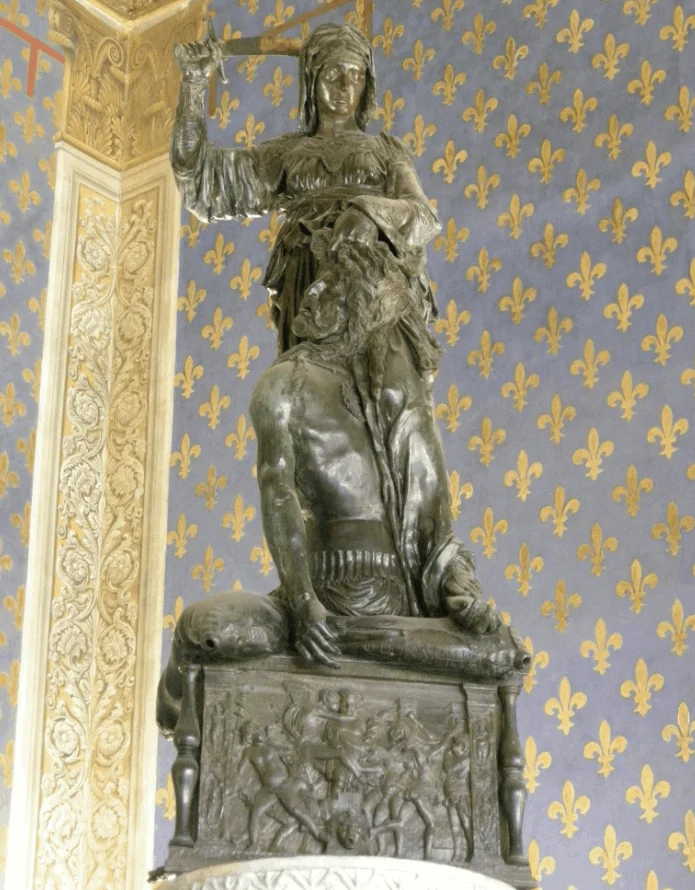
13. Where is the Statue of David located now?
Halfway through the 19th century, after standing 2 and half decades outside the Palazzo Vecchio, David started showing cracks in his left leg. This was caused by the uneven ground that started to sink from the constant pressure of the huge statue.
Therefore, David was removed from its original location in 1873 to be displayed in the Accademia Gallery, an art museum in Florence.
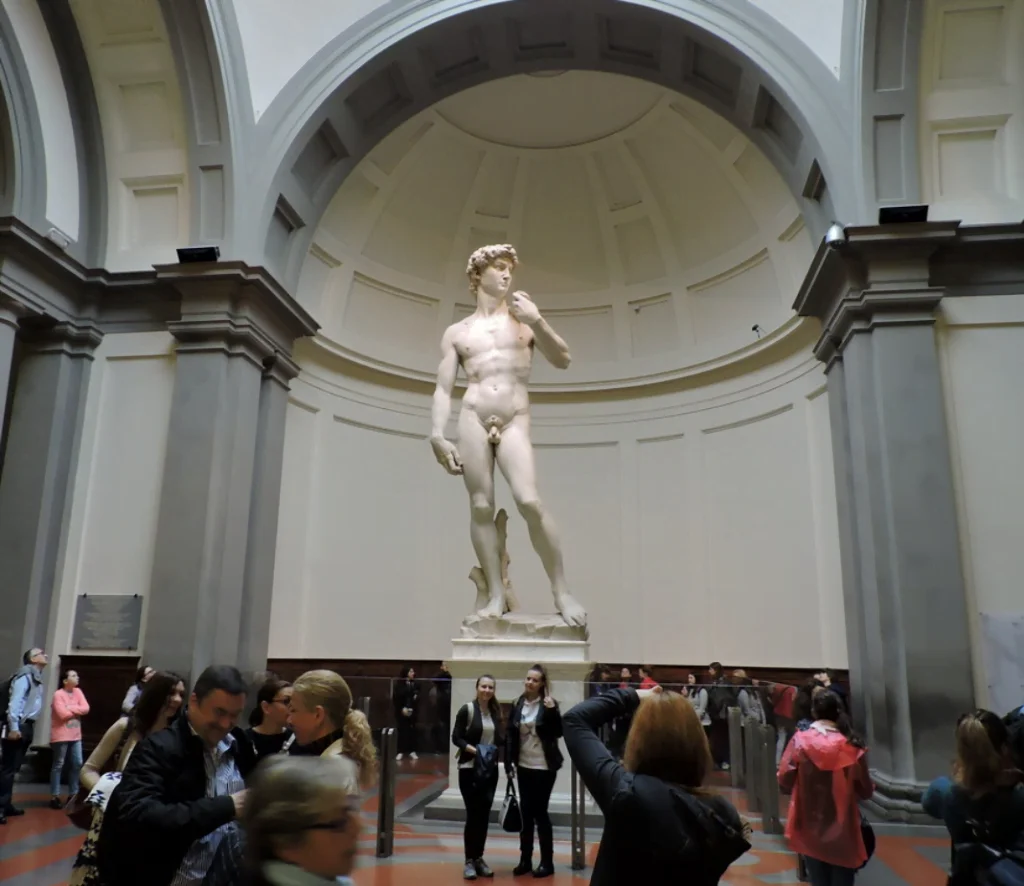
14. A replica was put in its original location
Are you planning to go to Florence? Then don’t be surprised to see David standing majestically in its original location right next to the Palazzo Vecchio!
In 1910, it was decided to put a copy of David back in the original location, the spot that was chosen by the committee of 30 artists over 4 centuries ago.
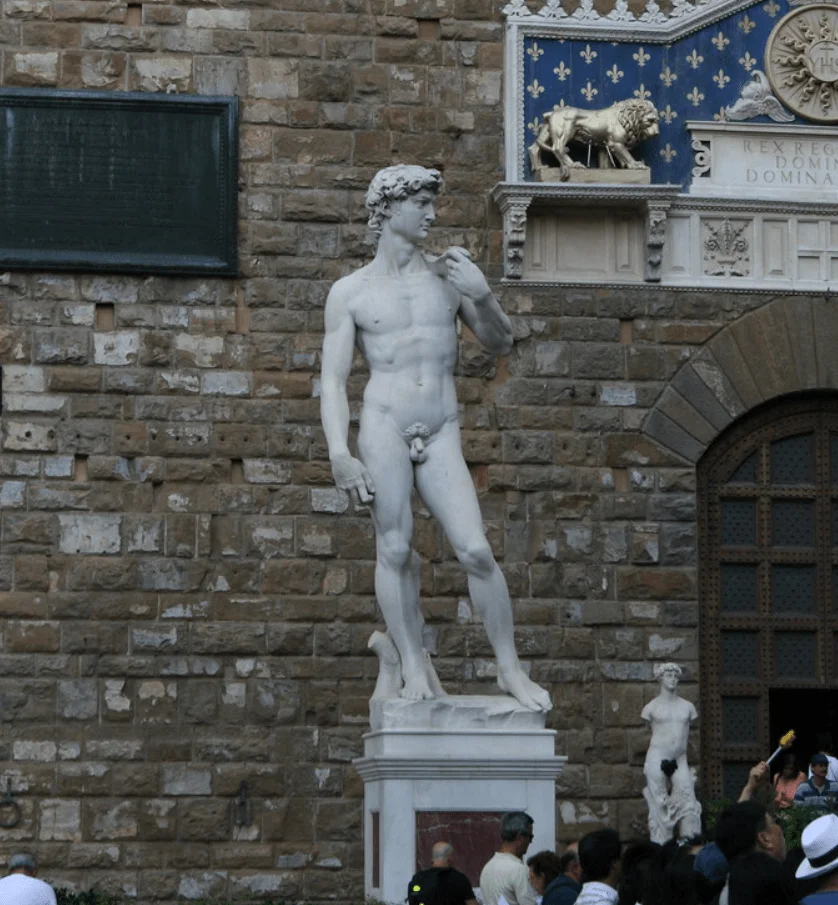
15. David can literally make you go crazy
One of the weirdest facts about the Statue of David is that it can actually trigger a mental episode among certain individuals.
Doctor Graziella Magherini, one of the most renowned psychiatrists in Florence described the condition as “the David Syndrome,” a moment of complete disorientation caused by the sudden awe experienced by staring at the amazing sculpture.
It’s closely linked to the “Stendhal Syndrome,” named after a French writer who was suddenly overwhelmed by emotion when staring at frescoes in Florence’s Church of Santa Croce in 1817.
According to the psychiatrist, hundreds of people have already been rushed to Florence hospitals from an overdose of David.
Not for the faint of heart, this statue!
16. David didn’t fight Goliath yet
One of the most remarkable facts about the Statue of David is that it was sculpted in a completely different way than the already existing depictions of David at that time.
Other statues of David, by Donatello and Verrocchio, depict him just after he conquered Goliath, standing victorious over the head of his adversary.
In a painting by Renaissance painter Andrea del Castagno portrayed David as he was taking a swing at Goliath.
Michelangelo sculpted David a moment before the fight happened.

17. But he surely is ready to take a swing
This moment can be described as the tense moment when David realizes that he will have to fight Goliath.
His neck is tense, his right hand’s veins are bulging, and he holds a sling in his left hand and a rock in his right.
He’s ready for some action alright!
His body language is accentuated by his “contrapposto” position, which refers to the fact that most of his body weight leans on one foot. This gives the viewer the idea that his body is in motion.

18. His eyes and size are a bit flawed
Some of the features of the statue are not in proportion to reality. He has an unusually large head and his right hand is way too big. It has also been discovered that his eyes aren’t in tune as well (one eye is focusing on something nearby while the other is looking towards something in the distance).
His body is also very slender compared to his height, but this has contributed to the work done before Michelangelo started working on the statue.
So why are the measurements so out of whack with reality, something extremely atypical for Michelangelo, who was extremely knowledgable in anatomy (and even cut open corpses to learn more about the human body)?
The reason might lie in the fact that the sculptor wanted to accentuate the most important features of the statue. After all, it was supposed to be put on top of the roof of the Florence Cathedral.

19. David has endured multiple attacks
It’s been said that the gaze of David firmly points towards Rome. The reason for this is that David had become a political figure in Florence. It was also created during a time when the most powerful family, the Medicis, were exiled.
This resulted in the statue being stoned just one year after it was erected next to the city hall.
Once the Medicis returned to power in 1512, more trouble was coming and during an anti-Medici riot, protesters flung a chair at it and broke its left arm.
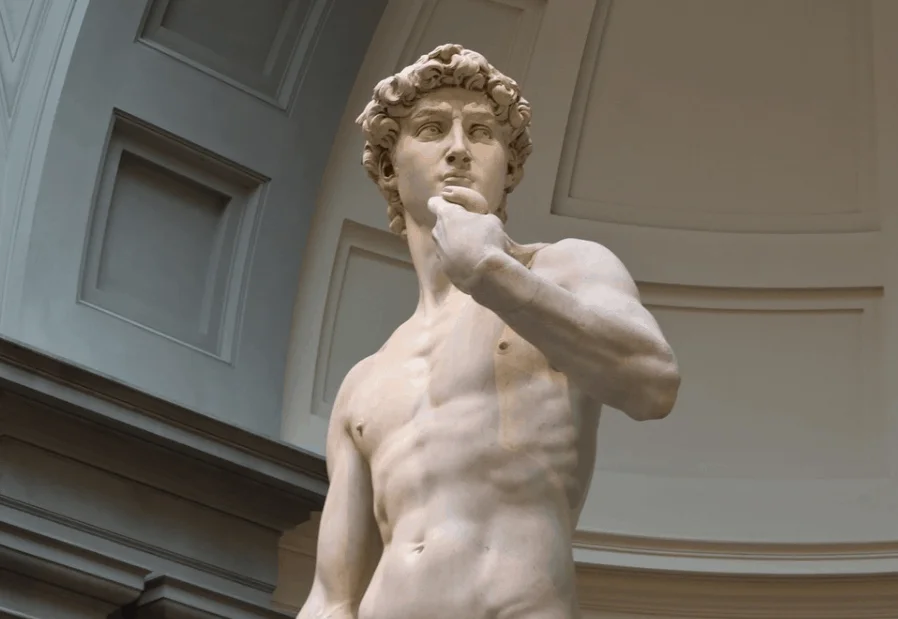
20. It was attacked more recently as well
There’s something about amazing works of art that drives lunatics to the point of madness. David isn’t an exception to this notion, and in 1991, a madman by the name of Piero Cannata used a hammer in an attempt to destroy the statue.
The police as able to stop him as he was working on David’s left foot, damaging a few of his toes in the process.
The police referred to this individual, who claimed to have heard voices in his head ordering him to do so, as “deranged.”
How did they get that idea?

21. David was censored at the request of Queen Victoria
How awful, this nude man!
These were the first thoughts going through the mind of Queen Victoria of Great Britain in the 19th century when she first laid eyes upon David.
When the plaster cast of David was placed on display at the Victoria and Albert Museum in London, the Queen ordered to have a fig leaf placed over its genitals so the visitors (including Royalty) wouldn’t be equally “shocked” as she was.
22. David has multiple replicas
David hasn’t just been replicated in its original location in Florence, it has been replicated countless times and can be found all over the world!
Replicas of the statue are often used to create a sense of culture, even though this is impossible because of the locations themselves, such as hotel lobbies, beach resorts, or even casinos.
The most famous replica is a bronze statue of David which is located on a square dedicated to its creator, the Piazzale Michelangelo in Florence. It is accompanied by four allegories of the Medici Chapel of San Lorenzo and was put into place on June 25, 1873.

